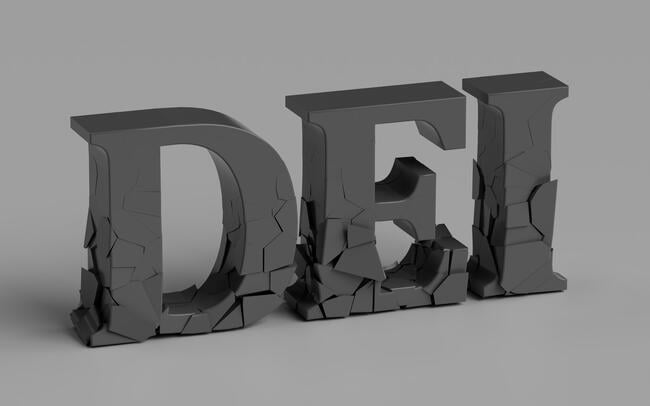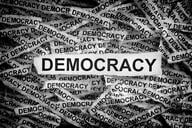You have /5 articles left.
Sign up for a free account or log in.

Just_Super/iStock/Getty Images Plus
DEI is under fire—not just from politicians, but from within the academy itself. What began as a push for equity now faces an existential crisis. Faculty, students and even longtime advocates are questioning whether DEI has lost its way—whether it’s become too symbolic, too scripted or too powerless to make real change.
I spent five years as a DEI officer in higher education. I pushed for change in an academic system that claimed to want it. I still believe in DEI. Yet, I’ve seen how often it fails—not because the ideas are wrong, but because the execution is. Diversity, equity and inclusion, when thoughtfully and strategically embedded, can be transformative. But when they become symbolic gestures, checkbox exercises or top-down mandates imposed without trust or buy-in, they often backfire. I’ve seen both.
This isn’t a takedown. I write this because I still believe in the work—and because belief without scrutiny is dangerous. DEI doesn’t need to be dismantled. It needs to be reformed, strengthened and made more honest. We need fewer slogans and more substance. Less signaling and more systems. And above all, more humility about the complexity of this work.
One of the biggest problems I’ve seen is the reduction of diversity to only race, ethnicity or gender. These are important dimensions, but they’re not the whole picture. When diversity becomes a proxy for visible identity markers alone, we miss what actually makes institutions stronger: a wide range of lived experiences, skill sets and worldviews. Inclusion isn’t about agreement—it’s about making space for people who see the world differently. The danger of focusing too narrowly is that we create institutions that look diverse yet whose members still think the same—and that kind of monolith doesn’t solve complex problems. It makes us worse at solving them.
We live in a time of extraordinary complexity. Whether we’re addressing climate change, artificial intelligence, mental health or global conflict, these challenges require collaboration across differences. Research shows that diverse teams produce better results. They’re more creative, more innovative and more likely to challenge assumptions that would otherwise go untested. But it only works when inclusion is real—not performative. Diversity without inclusion is like assembling a symphony and never letting half the musicians play.
This is why we can’t afford to get DEI wrong. Because when we do, the consequences ripple out—not just in missed opportunities for innovation, but in eroded trust, disengagement and backlash. And some of that backlash, while politically weaponized in many cases, is also fueled by real problems with DEI itself.
We need to be honest about one of those problems: the silencing of dissenting views. When DEI is framed in a way that suggests there is only one acceptable perspective—or when people who raise legitimate critiques are dismissed as regressive—it undermines the very values of inclusion and dialogue. True equity work must make space for disagreement, especially when it’s respectful and grounded in a shared desire for improvement.
When critical questions are treated as threats, or when people fear professional consequences for expressing dissent, we risk undermining the values of intellectual rigor and inclusion that DEI is meant to uphold. It’s a short path from ideological clarity to rigidity, which can shut down the kind of dialogue that progress requires. Inclusion must mean inclusion of unpopular opinions, too. This is one lesson I learned the hard way.
Another challenge that continues to undermine trust in DEI efforts is the perception of the so-called diversity hire. The phrase is loaded, toxic and—when DEI is done badly—not entirely baseless. In institutions where hiring is reduced to checking demographic boxes, this perception takes hold. And with it, the person hired is immediately set up to fail. Not because they lack qualifications, but because their colleagues are convinced they were chosen for the wrong reasons. It erodes trust, breeds resentment and delegitimizes the entire process.
But that’s not what DEI is supposed to be. When done right, it broadens the search process. It doesn’t lower the bar. It means casting a wider net, doing targeted outreach and making sure the applicant pool reflects the full range of talent that exists. It means interrupting the biases that shape hiring—especially in homogeneous departments. And when you do that, the candidate pool becomes more diverse and more competitive.
During my time as DEI officer, we developed a faculty hiring tool kit to address these challenges. It supported broader outreach and inclusive job ads and helped search committees examine how bias can influence evaluations. The tool kit was adopted across the university and became the basis for a peer-reviewed publication. Search committees reported feeling more confident, and hiring outcomes began to reflect that intentionality. That’s what it looks like when DEI becomes a tool for excellence rather than a threat to it.
But even the best tools can’t fix a broken structure. Many DEI leaders are hired to drive change but denied the power or resources to do so. They’re tasked with transforming the institution but positioned on the margins of decision-making. And when change doesn’t come fast enough, they’re blamed. I’ve felt that pressure. And I’ve seen how it erodes trust—not just for those doing the work, but for the communities they’re meant to serve. If we’re serious about equity, we have to stop treating DEI as both a priority and an afterthought. It can’t be the institution’s conscience and its scapegoat at the same time.
The truth is that a DEI office or officer does not matter in the slightest. What matters is what these offices and individuals are empowered to do—and how the institution responds. Too often, DEI structures are set up with grand titles but little actual authority. They’re underfunded, overburdened and expected to carry the weight of transformation without the tools to do it. Worse, they’re sometimes used for symbolic signaling while real decisions happen elsewhere.
Here’s a hot take: Land acknowledgments are one of the clearest examples of symbolic DEI gone wrong. Even many DEI advocates are uneasy about saying this out loud—but it’s a conversation we need to have. Originally intended as respectful recognition of Indigenous peoples, they’ve too often become formulaic, superficial and devoid of follow-up. When institutions recite them without engaging Indigenous communities, investing in their successes or addressing systemic issues affecting them today, the gesture rings hollow. Sometimes it’s even counterproductive—giving the appearance of moral action without the substance. That’s the danger of symbolic DEI: It feels good in the moment, but it can do more harm than good by masking the real work that needs to be done. Respect requires more than words. It requires meaningful engagement, resource investment and sustained commitment.
Another hot take: Sometimes constraints make the work better. Guardrails—even legal ones—can force us to get more creative, more deliberate and more focused on what actually works. In my home state of California, DEI work has operated under the legal constraints of Proposition 209, passed in 1996, which prohibits public institutions from considering race, sex or ethnicity in admissions, hiring or contracting. In 2020, a ballot initiative to repeal Prop 209 failed—leaving the status quo intact, but reigniting debate about what equity should look like in a race-neutral legal landscape.
Rather than marking a shift, the 2020 vote reaffirmed the challenge California institutions have been navigating for nearly three decades. Public colleges and universities have spent years adapting—expanding outreach and pipeline programs, revamping search processes, and investing in mentorship and faculty development—all without using race-conscious criteria. Without relying on the most legally vulnerable tools, they were pushed to build models of reform that were legally sound, broadly applicable and less susceptible to political attack.
California is not alone—some other states have adopted similar restrictions. And while the state is not immune from the scrutiny and investigations now facing institutions across the country, the constraints of Prop 209 forced a more intentional and durable approach to equity—one that may offer useful lessons for others.
As backlash to DEI spreads—through lawsuits, legislation and public discourse—it’s easy to dismiss it all as reactionary. Sometimes it is. But sometimes it’s a response to real flaws: lack of transparency, ideological rigidity, symbolic efforts with no outcomes. The solution isn’t to abandon DEI. It’s to do it better. With more rigor, less theater. More results, fewer slogans. We need to distinguish between bad DEI and good DEI. Between what divides and what unifies. Between what placates and what transforms.
Here’s the reality: The alternatives to diversity, equity and inclusion—uniformity, inequity and exclusion—aren’t values any institution should embrace. Few people, even DEI skeptics, would argue otherwise. The real debate isn’t about the values themselves—it’s about how they’ve been implemented, and whether the methods we’ve used actually advance the outcomes we claim to care about. If DEI is to survive, it has to evolve. Not into something shinier or trendier—but into something real. Built on trust, not performance. And that trust won’t come from more committees or statements. It will come from showing our work, owning our mistakes and staying committed to the values that brought us into this field in the first place.
That’s what I’ve learned. And I’m still learning. But I haven’t lost hope. The ground is shifting—but that disruption brings opportunity. It’s fertile soil for building something better. If we bring more humility to our certainty, more evidence to our strategies and more courage to our conversations, this might not be the end of DEI. It could be the beginning of something stronger.




